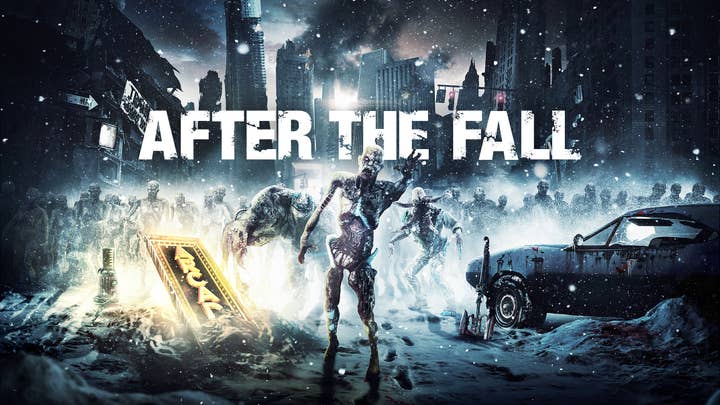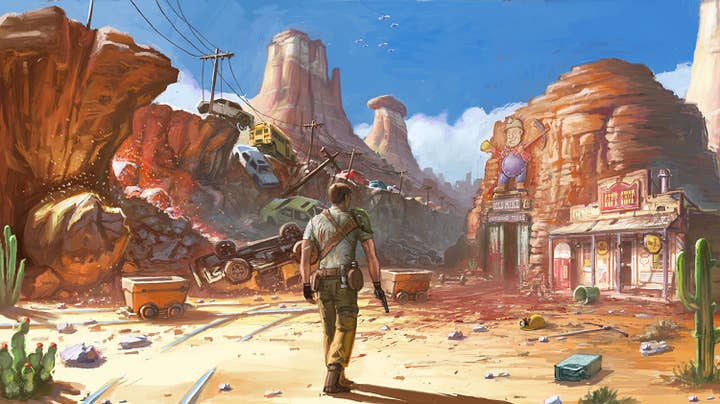VR lessons from Arizona Sunshine's success
Vertigo Games dives into the strategies behind its virtual reality hit, and how it paved the way for future projects such as After the Fall
A zombie apocalypse is difficult to contain. It tends to spread. Fast. That's what happened when we first started developing our VR zombie shooter Arizona Sunshine. We couldn't quite fathom just how far and wide it would go.
We started Vertigo Games with a group of games industry veterans in 2008 and have been passionate about virtual reality since the start of the modern VR era. While at the time it was still unclear where and how the VR market would move, we saw the potential VR held and were eager to explore the creative and technical possibilities it opened up for video gaming and help push its boundaries.
And so, we brought about a VR zombie apocalypse. When we released Arizona Sunshine for PC VR back in 2016, we were among the firsts to create a full featured VR game. It quickly became a market leading VR title, earning over $1.4m in its first month of release and was rewarded UploadVR's VR Game of the Year 2016. Today, the apocalypse has spread to approximately one out of every 10 VR gamers across PC VR, PlayStation VR and most recently Oculus Quest platforms with little signs of slowing down.
We couldn't quite fathom just how far and wide Arizona Sunshine would go
As the VR industry grew, so did the apocalypse. New hardware platforms entered the VR space and we rebuilt the game for these platforms multiple times. In between ports, we released more content to keep our fans engaged.
It wasn't long before our zombies broke into the out of the home market and the arena-scale free-roam Arizona Sunshine -- LB VR Edition was born. We even launched a fully immersive free-roam experience with real-world elements in partnership with Nomadic.
In this guest post, we will take you through some of the lessons we have learned about developing, publishing and distributing games for VR by explaining how we are applying them for our current action FPS production After the Fall, as well as third party titles.

Eat, sleep, build, repeat
Let's get one thing straight: getting your fully fledged VR game running on multiple, extremely different platforms is hard.
Back in 2016, Arizona Sunshine was a game that pushed the graphical boundaries of PC-based VR. To get it running on a completely different hardware platform such as PlayStation took a lot of time and effort. And it was the same, again, with Oculus Quest.
Each time we rebuilt the game for a different platform with its own unique challenges and opportunities. Ideally, you would develop these versions in parallel to preserve content and feature parity and allow for cross-platform play in a multiplayer game such as Arizona Sunshine. This wasn't a possibility for us because it was only after Arizona Sunshine first launched on PC VR that PlayStation VR and Oculus Quest were released.
A multi-platform VR development approach
Having to rebuild Arizona Sunshine multiple times over the years laid the groundwork for the multiplatform VR development approach that we have in use for After the Fall.
In its core, this approach allows us to develop a game for different platforms in parallel. It is powered by a VR-specialized engine layer built on top of the Unity engine that our senior programming team has created and continues to expand upon, featuring modules for multi-platform VR development. Think of a range of tools and common modules as a subset of the Unity engine built in order to make VR games scalable from the maximum high-end to the very minimum low-end.

One of the key functions the VR engine layer offers is making it possible for us to work in one Unity scene and then export this to platform specific scenes. Putting it more simply, building the game once rather than multiple times for different platforms. This applies rules, validation checks, combine and convert passes to output scenes which are performant and in complete parity for the target platforms, bringing us several advantages.
Firstly, and perhaps most importantly, this lets us support cross-platform multiplayer with After the Fall without compromises for users on higher-end hardware, as the core of the game stays the same regardless of the platforms it is built for. Because of this, our artists don't have to limit themselves for one platform by the constraints of another. The high-end version will contain all the bells and whistles which we all want to see on that hardware.
Next, it lets us support any new-gen platforms, HMDs or peripherals more easily. In the past we spent numerous days tweaking gun offsets for different controllers, having to do it all over again when new platforms or peripherals come out. Our Unity-based VR engine layer lets us define markers ranging from the low-end to the high-end in a way that supports anything in between, which makes development for After the Fall a much more streamlined process.
Finally, it allows us to easily integrate post-launch updates and content for After the Fall across multiple platforms. Similarly to the development and publishing process of the base game, we are building and testing a single core version of post-launch content and updates that from there will be adapted for and distributed to the various VR platforms.
Breaking out of the home
The out of home or location-based entertainment (LBE) VR market -- best known for VR arcades -- is slowly transitioning into the new normal. An opportunity often overlooked by VR devs, this lets you tap into an entirely additional audience: consumers who are not (yet) ready to buy into a VR set-up at home.
Not only does this provide an additional revenue stream at the minor cost of small adjustments to your VR game, but we also see out of home VR as our first line of offence for converting newcomers into VR enthusiasts who could end up buying our full games later.
Location-based VR lets you tap into an entirely additional audience: consumers who are not (yet) ready to buy into a VR set-up at home
The arcade edition of Arizona Sunshine is tailored to the out of home customer journey, letting players enjoy the game with the least possible onboarding time and lowest possible learning curve. For example, in the early stages of our partnerships, arcade operators pointed out that the menu at the beginning of the game was an unnecessary step for a consumer who is paying by the minute.
They are there to jump into the VR zombie apocalypse guns blazing, not to surf a menu. So we simplified the set-up process and adjusted some game mechanics like easier controls and auto reloading. This relieves arcade operators of having to guide players with staff and allows them to maximize their revenue through optimizing customer throughput times.
For room-scale VR titles, there are a multitude of distribution platforms out there that can help you get your game into VR arcades and locations, ranging from Steam Commercial Licensing to distribution partners specialized in this market. For Vertigo Games-distributed titles including Arizona Sunshine and Space Pirate Trainer, deploying a combination of direct and indirect distribution channels across 40+ countries and 700+ locations has led to a market share of approximately 25% of all minutes played in Western VR arcades.
From VR experience to entertainment attraction
If you want to take it a step further, the out of home market is an opportunity to monetize your VR game through offering unique and powerful VR attractions that can't be enjoyed at home by oneself. Arena-scale free-roam VR experiences like Arizona Sunshine - LB VR Edition typically allow up to four players to physically move and interact in one shared play space. By implementing real-world (4D) elements such as vibrating floors and wind effects, we created the illusion of exploring multiple levels of an underground military warehouse.
These high-end, shared experiences provide the highest level of immersion virtual reality currently has on offer, and give reason to even VR headset owners to visit an arcade with their friends.
The complexity of developing, testing and running a multiplayer, co-location free-roam experience led to our in-house development of Haze VR, the LBE VR distribution platform and launcher we built to access, launch, operate and manage multiple arena-scale VR offerings within one interface. It was initially developed as a means to speed up and streamline development and testing of Arizona Sunshine - LB VR Edition internally.
How to successfully survive a zombie apocalypse
In this fast changing and growing VR space it is important that you remain flexible and agile in adapting to new technologies (even ones that haven't been announced yet). The sooner you can implement a flexible development strategy, the more efficiently you will be able to create a quality port across platforms.
Remember to think outside the box -- branching out into a new market or franchising new and unique LB VR adventures are just one example of tapping into a new audience. With Arizona Sunshine, we've been building a network and developing tools that have set the groundwork for future VR development projects such as After the Fall and any other title.
The VR industry is a vibrant and dynamic place to be and coming up with creative solutions to continue to push the boundaries of VR is the key to developing and launching a successful virtual reality game and make the absolute most out of it.
Written by: Vertigo Games' Trevor Blom (technical director), John Coleman (director of business development), Aïsha Kuipers (PR manager)

